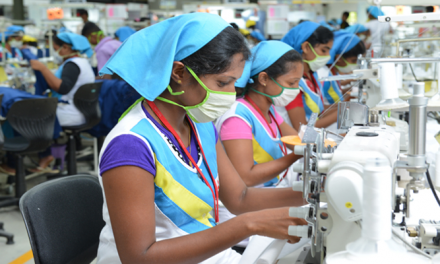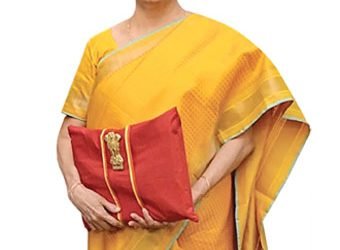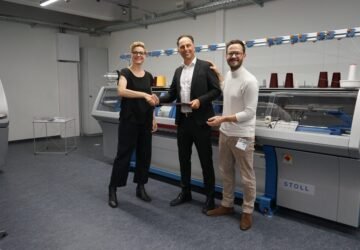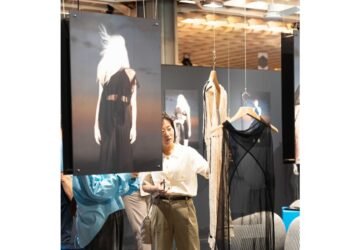 In a significant step towards promoting a culture of ecoconsciousness, Naia™ from Eastman partnered for an educational project with ESDI Escola Superior de Disseny in Sabadell (Barcelona). This collaboration underscores a commitment to integrating sustainable practices with academic excellence, providing ESDI students with the opportunity to design and produce garments using Naia™ fibers to participate in a fashion competition that celebrates the eternal tale of heaven and hell, Dante Alighieri’s “The Divine Comedy.”
In a significant step towards promoting a culture of ecoconsciousness, Naia™ from Eastman partnered for an educational project with ESDI Escola Superior de Disseny in Sabadell (Barcelona). This collaboration underscores a commitment to integrating sustainable practices with academic excellence, providing ESDI students with the opportunity to design and produce garments using Naia™ fibers to participate in a fashion competition that celebrates the eternal tale of heaven and hell, Dante Alighieri’s “The Divine Comedy.”
The event took place on July 1, 2024, at the Alliance Francaise in Sabadell, Barcelona, and was judged by a select jury of internationally renowned leaders within the fashion and textile industries. Including Abel Ortiz, owner of Naia™ partner mill, Textiles Ortiz; Sita Murt, brand owner of Montserrat Figueras; the Italian-born and Barcelona-based designer Claudia Ligari, owner of the eponymous brand; and Carolina Wilches, Senior Application Development Representative at Eastman.
Naia™, in collaboration with ESDI, developed the project to create a seamless production process that prepares students for the dynamics and challenges that lie ahead in their future as industry players. The aim is to create and to enhance supply chain relationships, involving weavers, garment manufacturers and schools, as well as recognizing and rewarding the most innovative young designers during a special event. As part of this initiative, Eastman provided students with fabrics made from its Naia™ Renew fiber, in partnership with two esteemed textile manufacturers, Hallotex from Spain and Riopele from Portugal. Naia™ Renew cellulosic fibers are made from 60% sustainably sourced pulp and 40% certified recycled content*. The recycled component is obtained through Eastman’s patented carbon renewal technology to convert hard-to-recycle waste materials into molecular building blocks, which can be used, re- used and recycled time and time again. These building blocks are combined with sustainable wood pulp to produce biodegradable and compostable fibers for use in new textiles.
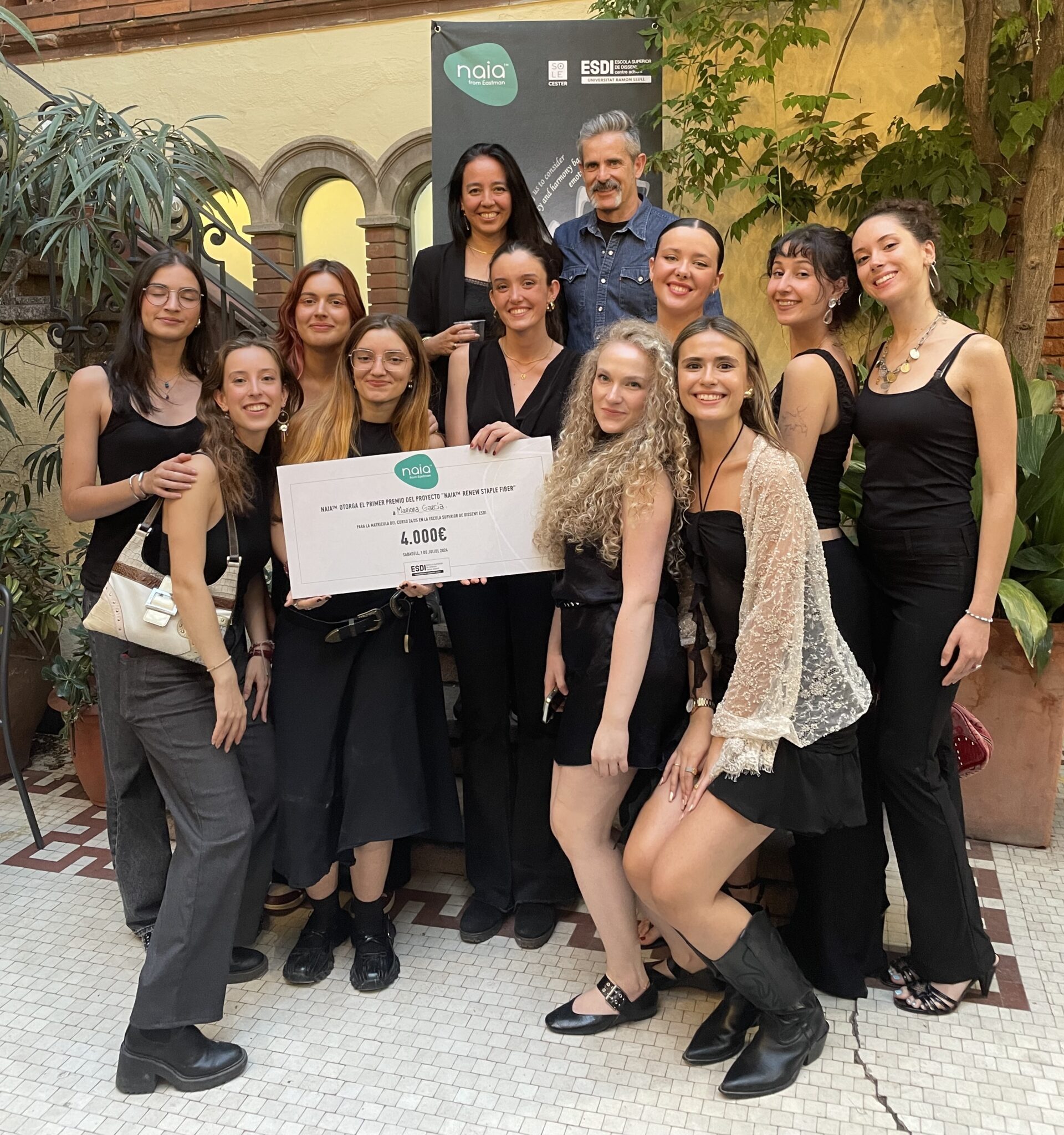 The fashion collection that derived from the program, named EKOS, was created and curated by a group of ten third-year ESDI fashion students: Mariona Garcia, the winner of the competition, Inés Borrego, Andra Criado, Júlia Escudero, Aurora Gallardo, Clàudia Gómez, Ingrid Sala, Sila Sánchez, Queralt Turull and Aina Vila. EKOS is a proposal that invites us to consider a new order of beauty and harmony based on emotional balance. Made with sustainable fibers that originated from the concept of inner struggle, it is a testament to human anguish, emotional and spiritual purgatory. Through their work, the designers aimed to capture the complexity of existence and the incessant search for clarity and peace.
The fashion collection that derived from the program, named EKOS, was created and curated by a group of ten third-year ESDI fashion students: Mariona Garcia, the winner of the competition, Inés Borrego, Andra Criado, Júlia Escudero, Aurora Gallardo, Clàudia Gómez, Ingrid Sala, Sila Sánchez, Queralt Turull and Aina Vila. EKOS is a proposal that invites us to consider a new order of beauty and harmony based on emotional balance. Made with sustainable fibers that originated from the concept of inner struggle, it is a testament to human anguish, emotional and spiritual purgatory. Through their work, the designers aimed to capture the complexity of existence and the incessant search for clarity and peace.
This educational collaboration is a reflection of Naia™ from Eastman’s commitment to the United Nations’ Sustainable Development Goals (SDGs) and showcases its leadership in reducing environmental impact through advanced molecular recycling technologies. These are pivotal not just for their role in diminishing the carbon footprint of textiles but also for setting a new standard in mainstreaming circularity. Naia™ is at the forefront of promoting a circular economy within the fashion industry, both by converting waste into valuable, sustainable materials and by focusing on education and enabling students to work with them.
“At Eastman, we believe in the power of education to foster a more sustainable future.
Partnering with ESDI allows us to support the next generation of designers by providing them with the tools and opportunities to innovate responsibly,” states Carolina Wilches. “Education is a cornerstone of our sustainability strategy, which is why we prioritize initiatives thatenhance student learning and development.”
“This collaboration has been very beneficial for ESDI students because they have been able to work in a very similar way to the professional one: choosing from a number of predetermined fabrics, visiting suppliers and devising the project as a team, to end up doing individual work that they will have to put together again for the fashion show presentation,” says Jorge Zuazo, head of the Fashion Design Department at ESDI.





